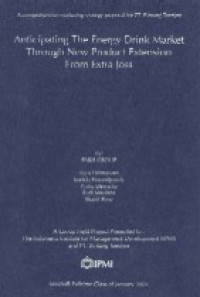
PT. Germania Trisila Air (GT Air) Low Cost Carrier Model in Indonesia
| Gmd : Text
| Availability :
| 00000010258 | 306 | (GFP) | Available - Ada |
The emergence of low cost carrier business in Indonesia was starting significantly after crisis period, supported by government deregulation to compete with foreign airline. Another factor contributing to this positive outlook is the fact that demand had been shifted from land transportation, sea, and air transportation, by recently launched airlines using low-cost concept. Significant growth can be seen from the number of passengers which reached 12.3 million in 2002 and 19.1 million in 2003. It is estimated that the number of passengers will reach 24 million in 2004 or incremental of 26% from year
2003 to 2004.
Low cost carrier is a model of airline that offer a product by eliminating most traditional passenger service. Through that strategy, low-cost carrier have substantially lower unit costs, however they do not have substantially lower unit operating revenue. This business offers service of flying with simple product, focused strategy, and low cost operation. It is an obvious that the key success factor of low cost is a very well run operation function. It can reduce its operating expenses dramatically compare to network/full service carriers. The lower operating expenses, the higher operating margin
can be reached.
By assessing macro economic of Indonesia, understanding the market needs, and enabling all activities to be integrated into one strong link of cost efficient generator, the model of low cost carrier business that is sustainable for Indonesia can be figured out.
Indonesian customer's character in using aircraft service is unique, significantly shaped by the culture. Thus the survey was conducted to asses the needs of the market. The rank of priority in term of selecting airline, most of airline user choose safety as the most important things. Punctuality of arrival/departure and flight schedule are chosen as the next priorities subsequently. Some of the users consider the image of airline can be important. In flight service is not classified in customer priority list in selecting airline.
Furthermore, the market was also assessed for their preferences of activity done in the business process, such as ticket reservation, baggage limitation, flight crew handling, seat allocation and other activities based on the theory of low cost carriers.
Then the market preferences are put in activities which analyzed using Porter's Value Chain Analysis of Airline. Those activities are explained in detail for the area of inbound logistic, operation, outbound logistic, marketing, services, firm infrastructure, human resources, technology department, and procurement. Every component mentioned in the value chain analysis is shaping a linkage of potential cost advantages in comparison with competitors and identifying the potential value added for the customer.
An airline cost structure is describing its business process. Seeking the advantages from main activities in the value chain linkage, there are some activities in Full Service Airline can be eliminated in Low Cost Carrier activities which impact significantly to lower the operational cost, such as : In flight Service, CRS and Travel Agent Commission. By implementing proposed activities designated in value chain analysis, the LCC'S cost portion difference can be approximately 40% of full service airline, thus the price can also be lower without lessen the profit margin.
Concluded from those analysis performed, the portfolio of low cost carrier business in Indonesia is figured out. This appropriate model of low cost carrier is significantly different from the existing player in the country, such as Lion Air, Batavia Air, Adam Air, or others.
By taking assumption on unlimited initial capital outlay (mainly to procure the new type of aircraft and setting up business), this low cost model can be generated in Indonesia, while the supplier-operation-buyer environment in Indonesia airline industry can be well- managed to run the activities detailed based on the value chain.
Recommendation on visioning the business, defining target market, selecting route and aircraft type, determining the firmly system and procedure for all operation, and perfect managing the human resources based on low cost principles are the key success factors for the sustainable low cost carrier in Indonesia, different from the existing players.
Emphasizing on Human Resource and taking advantages from the current players in Indonesia of introducing the concept of low cost carrier to the market, now it is the right time to run the proposed model of Indonesia Low Cost Carrier.
Research Location : Germania Trisila Air (GT Air)
Read at Library Only
| Series Title |
-
|
|---|---|
| Call Number |
306
|
| Publisher Place | Jakarta |
| Collation |
69p.: tabs., figs.; 30cm.
|
| Language |
English
|
| ISBN/ISSN |
-
|
| Classification |
-
|
| Media Type |
-
|
|---|---|
| Carrier Type |
-
|
| Edition |
-
|
| Subject(s) | |
| Specific Info |
-
|
| Statement |
-
|
| Content Type |
-
|
No other version available







